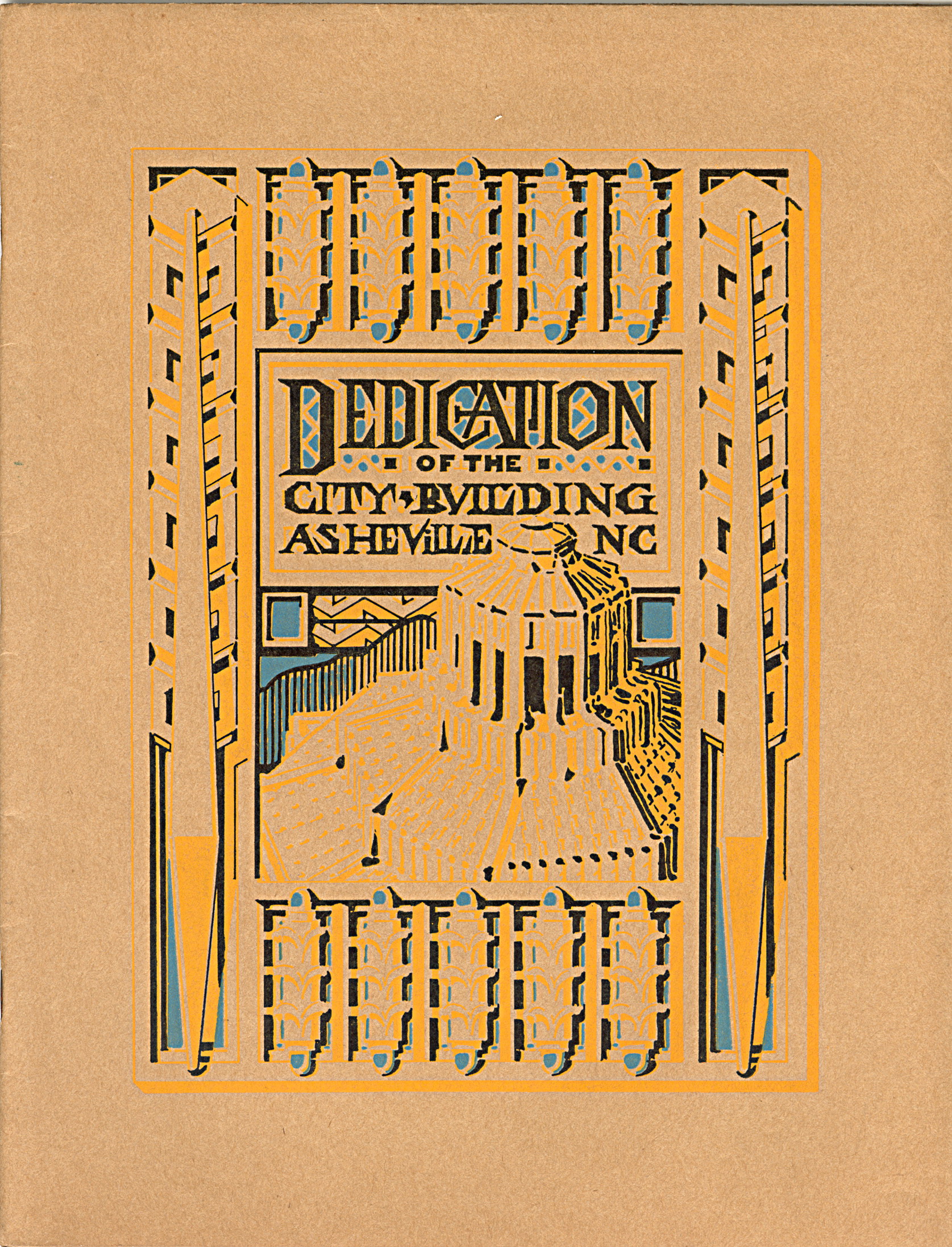| Page |
Image |
Description |
Thumbnail |
| Cover |
dcba001 |
Drawing by Douglas D. Ellington of City Hall
in Downtown Asheville |
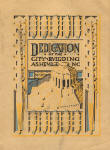 |
| 1 |
dcba002 |
Exercises March 19th, 1928
AFTERNOON PROGRAM—3 TO 6 P.
M.
Formal Opening and
Dedication of City Hall Asheville, North Carolina
Gallatin Roberts,
Mayor—Master of Ceremonies. Mayor and Commissioners Reception to the
Public. Music on the Mezzanine Floor. General Inspection of the Building:
Elevators to 8th floor and
stairways or elevators down to any desired floor.
Eighth floor—Rotunda and
tower.
Seventh floor—Engineering
Department.
Sixth floor—U. S. Forestry,
Geological Survey and G. S. Park Commission.
Fifth floor—Unassigned.
Fourth floor—Public Welfare
and Laboratories.
Third floor—Public Works &
Safety Departments,
Second floor—Mayor's
office, Public Accounts, Council Chamber.
First floor—Tax and Water
Departments, Carolina Motor Club, Reception rooms.
Assistants on each floor
will be pleased to guide and explain.
Souvenir booklets
distributed by: Hall Fletcher High School David Millard High School Misses
Ovedia Hammond Misses Aileen Stikeleather Mildred Jones Catharine Wright
Virginia Jarrett Catharine McNeely
EVENING PROGRAM—8 P. M. TO
11 P. M.
General Illumination of
Building Dedication Ceremonies in Council Chamber, 8:45
America
......................................................................
Orchestra
Invocation.......................................................Dr. R. F.
Campbell
Address....................................................Mayor Gallatin
Roberts
Stars and Stripes
Forever...............................................Orchestra
Address................................................Ex-Mayor John H.
Cathey
Dixie..............................................................................Orchestra
Introduction of Visiting
Mayors...................Mayor Gallatin Roberts
Southern
Medley.,..........................................................Orchestra
National Anthem
............................................................Orchestra
Music Mezzanine floor by
Dunn's Orchestra.
Music Eighth floor by
Asheville High School Orchestra.
Souvenir booklets
distributed by:
Hall Fletcher High School
David Millard High School
Misses Lillian Jones Misses
Kristine Gaither
Willie Henderson Martha Sue
Buttrick
Margaret Byerly Sara Ownbey
At 12:00 midnight, lights
extinguished, beginning at top floor, ending with front lanterns. One
minute intervals.
Music by Dunn's Orchestra.
|
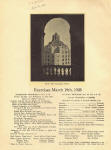 |
| 2 |
dcba003 |
Contractors
Miller
Engineering Corporation, General Contractor,
Siuder Bros., Asheville, N.
C.t Plumbing Contractor.
Pickard & Co., Asheville,
N. C., Heating Contractor.
Otis Elevator Co., Drhumor
Bldg., Asheville, N, C., Elevator Contractor.
General Fireproofing Go.,
(B. L. Ownbey, representative) Youngs-town, Ohio, Steel Furniture
Equipment.
Southern Desk Co., Hickory,
N. C., Special Furniture.
Sikes Co., 23rd & Passyunk
St., Philadelphia, Pa., Chairs.
Asheville Supply & Foundry
Co., Asheville, N. C., Structural Steel.
Truscoo Steel Co.,
Youngstown, Ohio, Reinforcing & Metal Joists.
Georgia Marble Co.,
Marietta, Ga., Exterior & Interior Marble.
Atlantic Marble & Tile Co.,
Charlotte, N. C., Tile & Terrazzo.
Atlantic Terra Cotta Co.,
New York City, Architectural Terra Cotta.
Shuman Roofing Co.,
Charlotte, N. C., Roofing & Sheet Metal.
Metal Door & Trim Co., La
Porte, Ind., Metal Doors.
Richey Browne & Donald,
Long Island City, Metal Windows.
Thos. Moulding Brick Co.,
Chicago, 111., Composition Floors.
Chavannes Lumber Co.,
Knoxville, Term., Millwork.
Bussard & Co., Washington,
D. C., Plastering.
O. K. Nestor, Norfolk, Va.,
Painting.
Virginia-Carolina
Electrical Works, Norfolk, Va., Electric Work.
Biddle-Gaumer Co.,
Philadelphia, Pa., through Electrolier Company, Asheville, N. C.,
Electrical Fixtures.
J. D. Wilkins, Greensboro,
N. C., Ornamental Sc Miscellaneous Iron.
Southern Steel & Cement
Co., Asheville, N. C., Brick.
Lee Barrett, Asheville, N.
C., Lathing.
Central Glass Co., Bristol,
Va., Glazing.
Yale & Towne Mfg. Co.,
Stanford, Conn., (Brown Hardware Co., Asheville, N. C., representatives)
Hardware.
Anchor Fireproofing Co.,
Detroit, Michigan, Fireproofing.
York Ice Machine Co., York,
Pa., (Siuder Bros., Asheville, N. C., representatives) Ice Water
Circulating System.
Johnson Service Co., New
York City., Temperature Control.
Kewanee Boiler Co.,
Kewanee, 111., Boilers.
Spencer Turbine Co.,
Hartford, Conn.,. (Siuder Bros., Asheville representative) Vacuum Cleaner
System.
Curtis Lighting, Inc.,
Chicago, 111., & Beardslea, Chicago, 111., Commercial Lighting Fixtures.
E. F. Hauserrnan Co.,
Cleveland, Ohio, (Rutherford & Atkinson, Asheville representatives) Metal
Partitions.
|
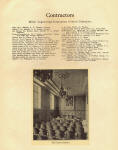 |
| 3 |
dcba004 |
[Pictured]
Douglas D. Ellington, Architect
American
Institute of Architects
Society of
Beaux-Arts Architects of New York
Beaux-Arts
Institute of Design
Paris Prize—Rougevin
Prize
The Architecture
Creative architectural
design becomes possible only after past expression in architecture has
been mastered. With this background fully understood it becomes possible
for the architect to turn his eyes to the future. Originality in
architecture, however, to be acceptable, must not be forced and must not
be merely a revolt against tradition; and above all things it must be
honest, which means that it must possess simplicity.
In the problem of the new
City Building of Asheville the designer made a close study of Ashe-ville
and its environs, what nature had done here and what man had added to it.
The designer then discussed at length with the officials who had the
project in hand, its site, its uses, its magnitude and the money
appropriation available. Within twenty-four hours following this
discussion a design was conceived and a sketch made. This first sketch
contained all of the elements which have been carried into the final
structure, except that the roof treatment and tower was projected beyond
the point as first indicated, this coming about as an evolution of the
desire that the contours of the building reflect the mountain background
and that the building be equally presentable from all points of view,
above and below.
The desire was to have the
structure emerge from the ground in fortress-like strength and ascend to
its full height with a sense of verticality
and inevitability.
Throughout the making of the plans the material to be employed was in
mind; the particular marble, brick and terra cotta having been selected to
embrace a transition of shades paralleling the natural colors of the local
Asheville soil. The details in connection with the marble and the brick
were deliberately confined to the greatest simplicity, the more ornate
capping motifs having been equally deliberate and having been studied in
the light of the distance from the eye. All openings were of course
studied with a view to having them conform to the general spirit sought
for. The prevailing ornament, which may be described as a feather motif,
was devised as being lightly reminiscent of the Indian epoch.
The interior arrangement of
the building has been worked out on the basis of the greatest and most
convenient use of areas. The interior painting and ornamental plaster and
woodwork has been carried out in tones agreeable to the eye in the working
spaces and restful and inviting in the special offices and rooms. The
equipment, such as elevators, lighting fixtures, metal partitions and
similar items, have been designed with harmony in mind. This aim has also
guided the design and selection of the furnishings. The mural paintings
for the council chamber are in subjects symbolizing the historical
background of Asheville.
|
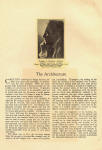 |
| 4 |
dcba005 |
"A Brief History of Asheville"
by Hon. Gallatin Roberts
Asheville was founded by John Burton in
the year 1794. It was called Morristown for a while. John Burton was in
fact a City Planner. He laid out a part of the grant which he secured from
the State into forty-two (42) lots of one-half acre each, established
streets thirty-three feet wide, and sold many of these lots for $2.50
each. (On the 2nd day of June, 1922, one of Asheville's streets was named
for John Burton, and is known as Burton Street) This new town was
sometimes called Buncombe Courthouse. In the year 1797 it was
incorporated, and called Asheville, named for Samuel Ashe, an eminent
jurist.
ORIGINAL
CITY CHARTER
"An Act establishing a town
at the court house in the county of Buncombe."
"Whereas, it is represented
to this General Assembly that the establishing a town at the court house
in Buncombe County would be of great utility and accord with the desire of
the inhabitants of said county, and there being a number of lots already
laid off at the said court house, and Zebulon Baird, Esq., the proprietor
of lands adjoining the same, having signified his consent to lay off as
much more land as will amount to sixty-three acres, including said lots
for the purpose aforesaid.
"1. Be it enacted by the
General Assembly of the State of North Carolina, and it is hereby enacted
by the authority of the same, that the aforesaid sixty-three acres of land
be and the same is hereby constituted and established, a town by the name
of Asheville, and that John Jarrett, Samuel Chunn, William Welch, George
Swain and Zebulon Baird, Esq., be and they are hereby appointed,
commissioners for the purpose of carrying into effect the plan of said
town and disposing of the lots in such a manner as they or a majority of
them shall think advisable; Provided, nevertheless, that nothing in this
act shall be construed so as to prevent Zebulon Baird from having the
power and right of executing titles of such lots as are yet not disposed
of.
"2. And be it further
enacted that, in all matters and things relative to said town a majority
of the commissioners shall constitute a quorum, and in case of death,
refusal to act, incapacity or removal of any of them, the remaining
commissioners shall fill up such vacancies; and that their first meeting
shall be held on the fourth Saturday in January, next, when they shall
proceed to appoint a treasurer, who
shall be of their own body,
and when chosen shall be considered as chairman, and into whose hands all
monies collected for the use of said town shall be paid; and he shall give
bond with sufficient security, payable to the remaining commissioners for
the due application and accounting for all monies by him received; and it
shall be considered his duty to cause all the laws, rules and regulations
made for the order and government of the said town to be carried into
effect.
"3. And be it further
enacted that the said commissioners or a majority of them shall have full
power and authority to make such by-laws and regulations as they may think
necessary for the good government of said town and shall have and possess
the same powers and authorities usually given to like commissioners, and
such rules and regulations as they make shall be carried into effect by
such penalties as they may deem necessary,
"4. And be it further
enacted that the commissioners aforesaid shall be empowered to lay tax
annually not exceeding the demands necessary for said town, either on the
poll or the value of town property, or both if necessary, which tax shall
be levied and collected in such manner as the said commissioners may
direct."
For the next fifty years
the growth of Asheville was exceedingly slow, and but little is known of
the activities of the little municipality. From the time Asheville was
incorporated up and until the year 1849, the town was governed by
Commissioners elected from time to time, probably at irregular intervals.
Today we have no official
minutes of the various town administrations of our City until the year
1849. On July 24, 1849, James M. Smith, James N. Patton, N. W. Wood-fin,
Wm. D. Rankin, and M, Patton were elected Commissioners.
As far as we have any
records to show, this board made the first effort to adopt rules and
regulations to govern its deliberations and its official actions.
Isaac B. Sawyer was the
first Mayor of Asheville. He was the father of the late James P. Sawyer.
Andrew Erwin was
Asheville's first Postmaster. He came to Asheville from Wilkes County. In
1814 he removed to the state of Georgia.
|
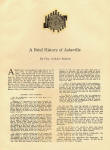 |
| 5 |
dcba006 |
In 1806 George Swain, who
lived at the head of Beaverdam Creek, was Postmaster. His second son,
David L. Swain, became Judge, Governor, and President of the State
University. Samuel Chunn was Chairman of the Buncombe County Court. From
him Chunn's Cove took its name.
The first Court House
erected in Asheville was built of logs and stood at the head of Patton
Avenue, not far from where Vance Monument now stands.
The Legislature in 1849
passed an Act extending the corporate limits of Asheville. At this time
there were not more than twenty-five residences and five brick buildings
in Asheville. The old Presbyterian Church was on the site of the present
one on Church Street, the Methodist Church property extended from Patton
Avenue and Church Street to the Aston property, the old Episcopal Church
on the site of the present Trinity Church, and the Jail stood on the east
margin of what is now Pack Square.
In 1850 the white
population of Asheville did not exceed three hundred, with probably one
hundred seventy-five negro slaves.
In 1851, the Legislature
incorporated the Asheville and Greenville Plank Road Company. This plank
road was between Asheville and Greenville, S. C., and contributed much
toward Asheville's growth. At the close of the war between the States this
plank road was in very bad condition, and in the year 1866 the Charter of
the Plank Road Company was repealed.
After the building of this
turnpike, Asheville became a health resort and people came to Asheville
from all parts of the South.
It is interesting to know
that on the 28th day of March, 1855, Zebulon B. Vance was elected town
Commissioner of Asheville, and served for one year. On the 4th day of
February, 1861, R. B. Vance was elected town Commissioner of Asheville.
Later in life these two brothers became famous. Zebulon B. Vance was
elected Congressman, Governor, and United States Senator, and R. B. Vance
served in Congress many years with distinction.
An inspection of the Minute
Books of the City of Asheville fails to show anything of particular
interest from 1861 until several years after the Civil War.
In the month of March,
1865, the Court House was burned. It stood near where Vance's Monument now
stands. At this time the Court room was full of prisoners. The fire was
first discovered in the top of the building by the guards. The fire had
burned the cords of the weight-clock, and the weights which were very
heavy dropped through three floors. This fire caused great excitement, and
Otto Hildebrand dashed through the town on horseback crying, "The Yankees
are here, and old Ashtown is burning up." This was before the day of water
works in Asheville. The public well was near where the Jackson Building
now stands, and during the progress of the fire the prisoners were taken
out of the building, and huddled in the street under guard. The building
was burned to the ground. Many of the records in the Court House were
saved by H. S. Walton, Silas Stroup, and John Wilson, and other citizens.
Buckets were taken from the Confederate Government Commissary, located
where the Plaza Theatre now stands, and a bucket brigade attempted to
carry water from the old well, above mentioned, to save the Court House
and other buildings on old South Main Street.
The Board which was elected
in January, 1869, fixed the tax rate as follows:
Each $100.00 worth of
personal property.................16
Each $100.00 worth of real
property.........................20
This Board also authorized
its Secretary to "correspond with parties where India rubber or leather
buckets could be procured to be used for carrying water in case of fire."
They taxed all stores where silver and gold canes were sold twenty-five
cents each respectively. During this administration the Board meetings
were held in the private office of the Mayor, Thos. D. Johnston, and he
was allowed twenty-five dollars per year for use of same. This is
mentioned only for the purpose of showing conditions then and now.
We forget, or do not
realize, how fast Asheville has grown during the last half century. The
outstanding achievement of the Board of Commissioners elected in 1871, was
the building of a calaboose for the sum of $200.00, and increasing the tax
rate from .16 cents to .30 cents upon personal property.
About this time, Goodson M.
Roberts had a large store...
(continues on page 8) |
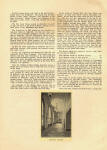 |
| 6 |
dcba007 |
Three photographs of "The Former Administration":
John H. Cathey (Mayor),
Frank L. Conder (Commissioner of Public Works),
C. H. Bartlett (Commissioner of Public Safety)
|
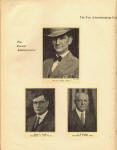 |
| 7 |
dcba008 |
Three Photographs of "The Current Administration":
Gallatin Roberts (Mayor),
L. B. Rogers (Commissioner of Public Works),
C. H. Bartlett (Commissioner of Public Safety)
|
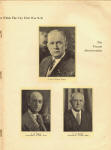 |
| 8 |
|
...where the United Cigar Store now stands, and just back of this store
was a farmer's Camping ground. There were no other buildings down to
Church Street, except one small baker's shop.
An interesting event in those never-to-be-forgotten days was the
arrival of the Stage Coach. The driver's bugle could be heard for miles.
The arrival of the Stage created as much interest in those days as the
arrival of a passenger train does in a small town now.
Judge James Henry lived just back of the present Bon Marche building,
and had his stable on top of Battery Park Hill. That wonderful hill was a
pasture fifty years ago. Many friends of nature and beauty were grieved to
see the steam shovel biting into this old beauty spot known far and wide
as "Battery Park". "You may break, you may shatter the vase if you will,
but the scent of the rose will cling to it still."
In 1877, the Asheville Library Association asked for financial aid from
the town and the request was respectfully refused for the reason that it
had no authority to use public funds for such purposes. In 1879 The
Asheville Public Library was started in a small way, and has grown to such
an extent that now it is recognized as the leading library in North
Carolina.
On the 28th day of February 1879, a great mass meeting was held in the
Buncombe County Court House, and this meeting demanded that the City
Officials issue $5,000.00 in bonds for the purpose of macadamizing Main
Street.
Today we look with interest upon the early efforts of our fore-fathers
to build a city.
On the 18th day of July, 1890, plans for the City Hall and Market House
building were considered, and a special committee was appointed to go into
the details of the construction of this new building. This building was
soon afterwards constructed, and on August 26, 1892, the first meeting of
the Mayor and Board of Alderman was held in the City Building at 5 o'clock
P. M. This building was torn down in 1926.
In the year 1881, the first active steps were taken to secure a water
supply for Asheville, and today we are still discussing the water
situation.
In the year 1881, the first railroad train reached Asheville, and came
over the Blue Ridge Mountains.
In the year 1882, under the administration of Col. V. S. Lusk, a Fire
Department was organized. That is just a few days back as we count time.
At a meeting of the town Commissioners, May 14th, 1883, Dr. J. H.
Williams was appointed to superintend the lighting of the street lamps,
"and the town Marshal was authorized to procure a suitable place for
empounding cattle that may be taken up for violation of ordinances."
On the 30th day of August, 1883, a jury was placed upon Chestnut Street
for the purpose of widening same, and the jury awarded each property owner
five cents as damages, and the report was duly approved by the Board.
In 1883 the Town of Asheville expanded and made the City of Asheville.
The circle boundary was discarded, additional territory being annexed at
the northeast and west. At the same time a strip of territory in the shape
of a half moon, lying east of Beaucatcher mountain was dropped from the
corporate limits.
In 1884 the Asheville Mission Hospital was opened in a five room house
by a few noble women, who conceived the idea of such an institution.
On the 4th day of February, 1884, the City of Asheville purchased from
Buncombe County the Jail property, where the old Market House formerly
stood for the sum of $5,000.00.
In the year of 1885 was really an epoch in Asheville's history. The
building of the Battery Park Hotel was an outstanding event, and was a
great boom to Asheville, and in Sept. 1886, the City authorities passed an
ordinance authorizing Asheville Street Railway Company to use the streets
of Asheville for street railway service.
|
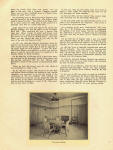 |
| 9 |
dcb009 |
In 1886, the City of Asheville secured
its water supply from the old pumping station on the Swannanoa river,
near where the present Asheville Recreation Park is located. In the year
1902 the present North Fork sixteen inch main was built, and in 1920-21
the Bee Tree line was built. Both lines bringing a large supply of water
into the City.
In 1887, the Asheville Female
College was built. This institution meant much to Asheville in its day.
It was located on Oak Street, where the David Millard High School now
stands, and it was in 1887 that artificial gas was first used in
Asheville.
The Asheville Normal & Associated
Schools was established forty years ago, Oct. 5, 1887. The Normal
department was added to this school is 1892, and during this time has
graduated one thousand, two hundred and seventy teachers. During the
past twelve years the course of study has been extended four years. This
has built the Normal and Associated Schools up to a standard four years
teacher's college, and now holds this rating as a standard teacher's
college.
It is interesting to recall the
early history of the Schools in Asheville. In January, 1888 six hundred
white children started to school in an old building on Montford Avenue,
known as the Asheville Military Academy, and one hundred and fifty negro
children in an old wooden building on Catholic Hill. In the year 1888
Orange Street was at a cost of about $10,000. In the year 1892, a new
building was provided at Montford Avenue, and Bailey Street, (now
Ashland Avenue), was added to the list of Schools.
On the 21st day of October 1886,
Grover Cleveland, then President of the United States, and Mrs.
Cleveland visited Asheville and were enthusiastically received.
In the year 1888 the Southern Bell
Telephone Company was granted permission to operate and maintain a
general telephone business in Asheville. This system has grown
tremendously, and today this company operates more than 12,000
telephones in Asheville.
An inspection of the minute Books of
the City reveals that on the 6th of December 1889, a page was dedicated
to the memory of Jefferson Davis, President of the Confederate States of
America. We are glad that this was done. The world is now leaning to
appreciate the worth of this great man of unimpeachable, and one of the
great men of history.
On the 17th day of October 1890, a
building permit was issued for the First Baptist Church, corner of
Spruce and College Streets. This Church building was just recently torn
down and a fine new structure erected on the corner of Oak and Woodfin
Streets.
In 1891 the Post Office was built.
On December 22, 1896, the corner
stone for Vance Monument was laid with the North Carolina Grand Lodge of
Masons officiating.
In 1905, the corporate limits of
Asheville were again extended, making the city's area 5.60 miles , or
the same as the city's present area lying on the east side of the French
Broad river.
The Langreen Hotel was built in
1912, and Grove Park Inn in 1913.
In the year 1915 the Commission form
of government was adopted, and in 1917 West Asheville was included in
the corporate limits. West Asheville at that time was incorporated, so
the move in 1917 was a merger of two incorporated cities, rather than a
boundary expansion.
Since 1917 six new schools have been
built, and another High School is under construction and today and the
school Department is valued at $5,028,325.55.
In the last few years the Recreation
Park, the McCormick Athletic Field, the Municipal Golf Course and the
Athletic Stadium were built.
Since 1920, four modern fire
stations have been constructed and full paid Fire Department added.
Asheville has shown a wonderful
growth during the last decade. The real and personal property in
Asheville is assessed at $104, 205, 000.00.
Today Asheville is one of the most
outstanding communities in the State of North Carolina, and as the years
come and go, our City will still continue to grow and develop. |
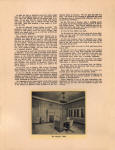 |
| 10 |
dcba010 |
Roster of City Commissioners from 1849
Prepared By Hon. Gallatin Roberts
July 24, 1849, James M. Smith, James W. Patton, N. W. Wood-fin, William
D. Rankin, and Montraville Patton were elected Commissioners of the City
of Asheville. James M. Smith was elected Chairman of the Board. At this
meeting by-laws and regulations for governing the town of Asheville were
adopted.
March 28, 1855, W. M. McDowell, A. T. Summey, Zeb. B. Vance, J. L.
Smith and M. L. Ntilson were elected Commissioners.
April 18, 1857, Isaac B. Sawyer was elected Mayor, J. E. Pat-ton, A. S.
Merrimon, W. M. Grains, and A. T. Summey, Commissioners.
April 24, 1858, Isaac B. Sawyer, was re-elected Mayor, E. Clayton, A.
S. Merrimon, T. W. Atkins, J. B. Rankin, and Wm. D. Rankin, Commissioners.
April 16, 1860, E. J. Aston was elected Mayor, P. W. Roberts, G. B.
Schackleford, Canada Cowan, Wm. A. Patton, Commissioners.
Feb. 4, 1861, Isaac B. Sawyer, Mayor, Wm. D. Rankin, J. F. E. Handy, G.
W. Shackleford, R. B. Vance and P. W. Roberts, Commissioners.
Feb. 18, 1862, E. J. Aston was elected Mayor, A. S. Merrimon, Thomas W.
Atkins, G. W. Shackleford, W. A. Patton, A. T. Summey, Commissioners.
March 2, 1866, Montraville Patton was elected Mayor, Wm. D. Hilliard,
J. M. Israel, Hugh Johnston, and Isaac B. Sawyer, Commissioners. Mr.
Patton resigned as Mayor, and J. W. Israel was elected.
Sept. 1, 1869, Oscar Eastmond was elected Mayor, Goodson M. Roberts, J.
Hildebrand, S. K. Stanville, John Jones and Rev. T. Atkins, Commissioners.
Nov. 20, 1868, S. G. Kerr was elected Mayor, to fill out the unexpired
term ot Mayor Eastmond, who resigned.
Jan. 4, 1869, Thomas D. Johnson was elected Mayor, Canada Cowan, Geo.
T. Spears, James P. Sawyer, D. C. McGregor, and John B. Clayton were
elected Commissioners, and on the 6th of January they were inducted into
office.
January 3, 1870, M. E. Carter was elected Mayor, J. E. Rankin, D. C.
McGregor, J. B. Clayton and Canada Cowan, Commissioners. Mr. Rankin was
made Secretary of this Board.
May 1, 1871, John Jones was elected Mayor, M. L. Neilson, J. H. Lange,
J. S. T. Baird, Wm. Weaver and John Hildebrand, Commissioners.
May 6, 1872, J. E. Rankin was elected Mayor, S. W. Burgin, J. W.
Patterson, M. J. Fagg, J. M. Alexander and J. H. Lange, Commissioners.
Mayor Rankin was re-elected Mayor in May 6, 1873, Goodson M. Roberts,
J. M. Alexander, G. W. Eve, F. M. Miller and M. J.
Fagg, Commissioners.
Mayor Rankin was again re-elected in 1874.
May 5, 1875, W. L. Milliard was elected Mayor, E. R. Hampton, A. E.
Baird, Pinkney Rollins and W. A. Weddin and Goodson M.
Roberts, Commissioners.
|
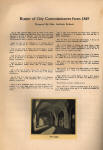 |
| 11 |
dcba011 |
(Picture of the former City Hall replaced by new
building and continuation of roster.)
May 10, 1876, J. E. Rankin was again elected Mayor, George Goodlake,
Samuel Merrill, Pinkney Rollins and John Hampton, Commissioners.
May 9, 1877, A. T. Summey was elected Mayor, F. M. Miller, W, A. Weddin,
G. W. Eve, John Clayton and Goodson M. Roberts, Commissioners.
May 6, 1879, A. T. Summey was re-elected Mayor, F. M. Miller, W. M.
Cockera, W. A. Weddin, V. S. Lusk, and J. E. Rankin, Commissioners.
May 2, 1882, Col. V. S. Lusk was elected Mayor, F. M. Miller, J. E.
Hampton, J, H. Williams, L. F. Sorrells and Newton Shep-pard,
Commissioners.
Col. V. S. Lusk was re-elected Mayor in May 8, 1883, F. M. Miller, T.
W. Patton, J. H. Williams, H. C. Hunt, Newton Shep-pard, J. E. Hampton and
L. F. Sorrells, Commissioners.
May 6, 1884, E. J. Aston was elected Mayor, W. H. Penland, I. M.
Gorenflo, T. C. Westall, J. P. Sorrells, and Wm. Weaver, Commissioners.
Mayor Aston was re-elected Mayor in 1885, Alonzo Rankin, Geo. F. Scott,
J. L. Murray, I. M. Gorenflo, and N. W. Girdwood, Commissioners.
April 6, 1887, H. S. Harkins was elected Mayor, R. L. Fitz-patrick, F.
M. Miller and W. E. Wolf, Alderman.
May 20, 1889, Charles D. Blanton was elected Mayor, J. H. McDowell, L.
Pulliam and C. B. Leonard, Alderman.
May 18, 1891, Chas. D. Blanton was re-elected as Mayor, J. D. Brevard,
T. C. Starnes, J. H. McDowell and C. B. Leonard at Alderman.
May 16, 1893, T. W. Patton was elected Mayor, B. H. Cosby, J. M. Gudger, H. F. Gudger, W. W. Jones, T. C. Starnes and J. M. Westall,
Alderman.
May 20, 1895, Hon. T. F. Davidson was elected Mayor, M. H. Fletcher, D.
D. Suttle, T. V. Terrill, W. A. Blair, Alderman.
May 18, 1896, William J. Cocke was elected Mayor, G. A. Mears, B.
Burnette, Wm. Jones and D. D. Suttle, Alderman.
May 3, 1897, J. E. Rankin was elected Mayor, W. M. Hill, Geo. Scott,
Samuel Kennedy, as Alderman, Alderman G. A. Mears, Wm. Jones and B.
Burnette were re-elected.
May 16, 1898, F. M. Miller was elected Mayor, Capt. W. W. West, R. J.
Sherrill, W. L. Connelly, J. H. Wood and A. Rankin, Alderman.
May 1, 1899, W. A. Blair was elected Mayor, S. T. Dorsett,
D. C. Waddell, Chas. T. Rawl, J. H. Wood and W. W. West, Alderman.
May 6, 1901, F. M. Miller, was elected Mayor, C. M. Baird, W. M. Hill,
E. C. Chambers, Chas. T. Rawl, D. C. Waddell, and S. T. Dorsett, Alderman.
May 5, 1903, Chas. T. Rawl was elected Mayor, S. Lipinsky, W. F.
Randolph, R. L. Fitzpatrick, C. M. Baird, W. M. Hill and
E. C. Chambers, Alderman.
|
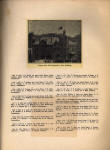 |
| 12 |
dcba012 |
(Picture of shadow and loggia and continuation of
roster.)
May 2, 1905, Alfred S. Barnard was elected Mayor, F. Stikeleatber,
Benj. Burnctte, Robt L. Francis, W. F. Randolph, R. L.
Fitzpatrick, I. M. Jones, Herbert C. Allen, S. Lipinsky, and J. H.
Wood, Alderman.
May 7, 1907, John A. Campbell was elected Mayor, J. H. Wood, Phillip C.
Cocke, W. F. Randolph, J. Frazier Glenn, I. M. Jones, Robert L. Frances,
Benj. Burnette and F. Stikeleather, Alderman.
May 4, 1908, John A. Campbell was re-elected Mayor, R. L. Fitzpatrick,
Wm. R. Patterson, J. E. Hardin, J. J. Jones, J. H. Wood, J. Frazier Glenn,
W. F. Randolph and Kingsland Van Winkle, Alderman.
May 2, 1911, J. E. Rankin was elected Mayor, R. L. Frances, C. W.
Brown, A. V. Sites, W. E. Shuford, R. L. Fitzpatrick, and J. J. Jones,
Alderman. (Commission form of government voted on but failed to be
established at this election.)
May 6, 1913, J. E. Rankin was re-elected Mayor, W. E. Patterson, F.
Stikeleather, W. E. Johnson, A. G. Barnett, A. B. Sites, W. F. Randolph
and C. W. Brown, Alderman.
May 4, 1915, J. E. Rankin was re-elected Mayor, D. Hidcn Ramsey,
Commissioner of Public Safety; J. G. Stikeleather, Commissioner of Public
Works.
April 28, 1919, Gallatin Roberts was elected Mayor, R. J. Sherrill,
Commissioner of Public Works; R. L. Fitzpatrick, Commissioner of Public
Safety.
May 24, 1923, J. H. Cathey was elected Mayor, F. L. Conder,
Commissioner of Public Works; C. H. Bartlett, Commissioner of Public
Safety.
May 24, 1927, Gallatin Roberts was elected Mayor, L. B. Rogers,
Commissioner of Public Works; C. H. Bartlett, Commissioner of Public
Safety.
|
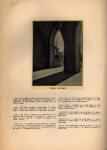 |
| 13 |
dcba013 |
[Back cover of booklet]
It was the good pleasure of
JARRETT'S PRESS, inc.
23 S. Lexington Ave.
To Print and Bind this booklet without cost to the City
of Asheville.
By the generosity of Mr. Reuben B. Robertson, President,
THE CHAMPION FIBRE COMPANY
Canton, North Carolina,
presented the paper used in the production of this
booklet. The cover stock is "Champion Envelope Craft" and the inside is
"Champion Bond," both manufactured in the company's big plant twenty miles
West of Asheville.
LEIGH EDWIN GILL, ADVERTISING
8 1/2 Wall St. or 12-14 Government
Donated his services on the layout,
typography and design
DOUGLAS D. ELLINGTON drew the cover design
|
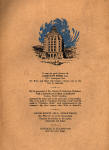 |


